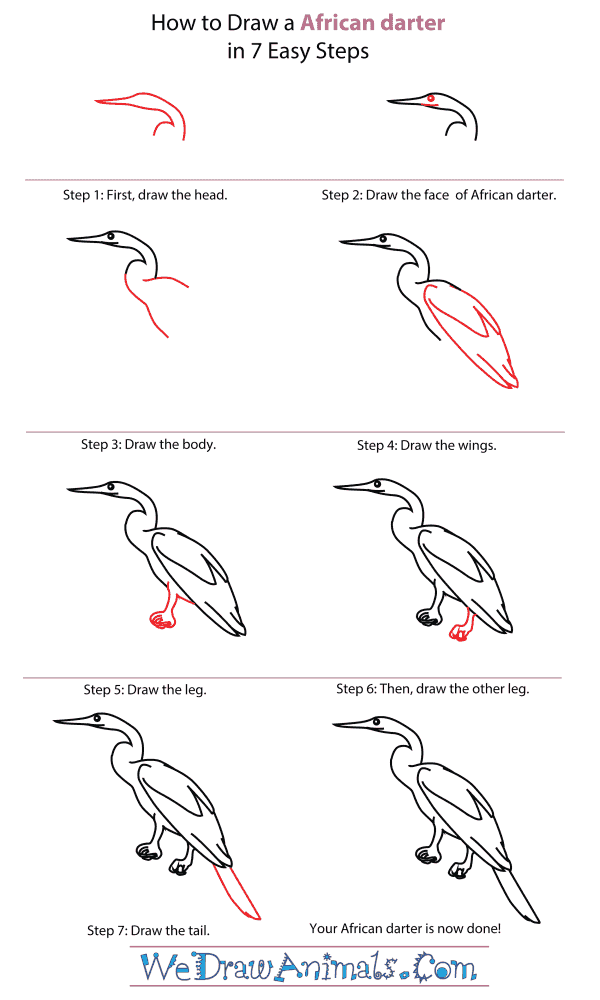In this quick tutorial you'll learn how to draw an African Darter in 7 easy steps - great for kids and novice artists.
The images above represent how your finished drawing is going to look and the steps involved.
Below are the individual steps - you can click on each one for a High Resolution printable PDF version.
At the bottom you can read some interesting facts about the African Darter.
Make sure you also check out any of the hundreds of drawing tutorials grouped by category.
How to Draw an African Darter - Step-by-Step Tutorial
Step 1: Let's draw an African darter! Start with the head and neck by, first, tracing a bump. Then trace two long, curved lines for the neck and head. End the lines with a pointy beak.
Step 2: Add a small circle for the eye, and draw a short line across the middle of the beak for the mouth.
Step 3: Down the front of the darter, trace two short curved lines that are stuck together at one end to create the belly. Then draw a curved line down the back. There's the body!
Step 4: For the wing, start at the back and create a long, wide oval. Now, fill in the detail by tracing lines along the middle of the oval and lines along the bottom. Those are your feathers!
Step 5: Trace two short lines for the leg and end it with a circle. In the circle, trace some lines to show off the claws. Here's a hint: the circle and lines look like a closed fist!
Step 6: Draw the second leg the same way you did the first leg, with the short lines and the closed fist.
Step 7: Beneath the wing, draw a long, tube-like tail, making sure that the end is not too pointy! Your African darter is now done!
Interesting Facts about the African Darter
The African Darter is also sometimes called the “Snakebird.” This is because it sometimes likes to swim with only its neck sticking up out of the water, which looks like a snake.
Did you know?
- Interestingly, waterbirds usually have waterproof feathers, but the African Darter does not. This means that its feathers do not have any oil in them. Oil naturally allows water to flow off of other waterbirds’ feathers, which prevents them from becoming waterlogged.
- Because of the African Darter’s non-waterproof wings, it needs to dry them off before it can fly away or increase its body heat. That is why African Darters can often be seen spreading their wings to dry off their feathers after they come out of the water.
- The African Darter will usually dine on fish, though it has also been known to eat such other water-dwelling creatures as amphibians, crustaceans, and bugs that can be found in the water, amongst other organisms.
After eating, the African Darter likes to rest on dead trees, as well as rocks or banks. The African Darter is hunted in some areas of Africa because of the fear that it will significantly reduce the amount of trout and other fish that are present in the water that people also need to eat to survive.








